As The FDA Restricts Nicotine, Consider Stocking Up
Because we like to do the opposite of what they say

So many ask about the tobacco and more info on nicotine, so here it is:
Nanobots destroyed by nicotine: HERE.
Smoking kills - or does it? See HERE.
Nicotine cures myocarditis with Dr. Bryan Ardis: See HERE.
FDA restricts the amount of nicotine in cigarettes: See HERE.
We previously wrote on smoking, nicotine and the whole tobacco scare (which includes types of tobacco to purchase), as well as La Quinta Columna’s microscopy study.
A twitter guy in the above article rolls his own cigarettes using this “Golden Harvest” brand of tobacco:
FDA Reduces Tobacco Nicotine
Now as Biden exited, he and the FDA put this forward on nicotine concentration in cigarettes being reduced, which automatically raises our suspicions that they’re getting ready to put something forward that is treated by nicotine (we can’t help but think this way).
Nicotine Press Release of January 15, 2025
The Rulemaking Process Video
Nicotine is the primary addictive chemical in tobacco products that keeps people using the products. In the case of combusted products, such as cigarettes, nicotine addiction leads to users being repeatedly exposed to a toxic mix of chemicals in the smoke that cause disease and death. Based on the scientific evidence outlined in the proposed rule, the proposed nicotine level for cigarettes and certain other combustible tobacco products would be low enough to no longer create or sustain addiction. Importantly, a large body of research also shows reduced nicotine content cigarettes do not lead smokers to compensate for lower nicotine by smoking more.
Existing evidence shows that cigarettes and other combusted tobacco products—products that are smoked, such as cigars and pipe tobacco—are the most harmful types of tobacco products. In fact, cigarette smoking is the leading cause of preventable disease and death in the United States and is a major driver of chronic disease nationally. Each year, cigarette smoking alone is estimated to kill nearly half a million people in the United States and has been estimated to cost the country more than $600 billion annually in healthcare costs and lost productivity.
“Multiple administrations have acknowledged the immense opportunity that a proposal of this kind offers to address the burden of tobacco-related disease,” said FDA Commissioner Robert M. Califf, M.D. “Today’s proposal envisions a future where it would be less likely for young people to use cigarettes and more individuals who currently smoke could quit or switch to less harmful products. This action, if finalized, could save many lives and dramatically reduce the burden of severe illness and disability, while also saving huge amounts of money. I hope we can all agree that significantly reducing the leading cause of preventable death and disease in the U.S. is an admirable goal we should all work toward.”
Given the massive public health burden of smoking, the proposed rule is estimated to have an unprecedented benefit for society. Based on the FDA’s population health model, by the year 2100, this nicotine product standard could prevent approximately 48 million U.S. youth and young adults from starting smoking. The model also projects that more than 12.9 million people who smoke cigarettes would stop doing so one year after the rule becomes effective, including those who would completely switch to noncombusted tobacco products; this estimate increases to 19.5 million people within five years of the rule being finalized. Additionally, the model estimates that by the year 2060, the product standard would result in 1.8 million tobacco-related deaths averted, rising to 4.3 million deaths averted by the end of the century. Due to these lives saved and diseases averted, the estimated benefits of the proposed rule are more than $1.1 trillion per year over the first four decades. FDA anticipates additional savings related to medical cost savings, productivity gains, and other impacts.
The proposed rule would not ban cigarettes or any other tobacco products. The FDA is proposing to cap the nicotine level at 0.7 milligrams per gram of tobacco in cigarettes and certain other combusted tobacco products, which is significantly lower than the average concentration in these products on the market today. The FDA’s proposal would apply to cigarettes, cigarette tobacco, roll-your-own tobacco, most cigars (including little cigars, cigarillos, and most large cigars), and pipe tobacco. The proposed rule does not include e-cigarettes, nicotine pouches, noncombusted cigarettes (such as heated tobacco products that meet the definition of a cigarette), waterpipe tobacco (hookah), smokeless tobacco products, or premium cigars.
In addition to preventing initiation among young people and promoting cessation among all population groups, the FDA expects that the proposal would also help adults who smoke switch to lower-risk alternatives. For adults who smoke, switching completely to lower-risk tobacco products would reduce exposure to the many harmful chemicals present in cigarettes and other combusted tobacco products. However, no tobacco product is safe; therefore, youth should not use tobacco products and adults who do not currently use them should not start.
“Today, we’re taking a critical step in the rulemaking process by providing the public with a proposal they can review and engage on,” said Brian King, Ph.D., M.P.H, director of the FDA’s Center for Tobacco Products. “This proposal allows for the start of an important conversation about how we meaningfully tackle one of the deadliest consumer products in history and profoundly change the landscape of tobacco product use in the United States.”
The agency is committed to providing multiple opportunities for public engagement on the proposal. Such interactions help the FDA develop policies and strategies to best guide the nation toward a healthier future. Starting on January 16, the public will have through September 15, 2025, to provide comments, which the agency will review as it considers future action. In addition to general comments, the FDA is specifically requesting input on several topics, including, the products covered by the proposed product standard; the proposed limit to the nicotine level; the proposed two-year effective date and likelihood that companies will be able to comply within that timeframe; and the potential for illicit trade resulting from the proposed product standard and any related impact to public health. As noted above, the FDA also intends to refer this proposed product standard to the Tobacco Products Scientific Advisory Committee for a public meeting and consider additional opportunities for public engagement on the proposal.
Source: https://www.fda.gov/news-events/press-announcements/fda-proposes-significant-step-toward-reducing-nicotine-minimally-or-nonaddictive-level-cigarettes
Here is a video and slides on nicotine, from Dr. Bryan Ardis.
NICOTINE IS A VEGETABLE NUTRIENT - IT IS NOT A DRUG
Every cell in your body has nicotine receptors.
The FDA is WRONG. Nicotine is in green peppers. And celery. It’s in every nightshade vegetable.
DISEASE PREVENTION AND TREATMENT
Nicotine prevents and helps symptoms of Parkinson’s, Alzheimer’s disease, Multiple Sclerosis (MS), the brain tumor called glioblastoma. One study on IV nicotine found that it cured a case of glioblastoma in three days.
ADDICTION TO NICOTINE?
It is not the NICOTINE that is addictive. It is the PYRAZINES that are added to tobacco products that are additive.
CARCINOGENS IN TOBACCO OR CIGARETTES?
It’s not the nicotine.
I may not agree with everything from the content producers I share. Apply critical thinking and use discernment to come to your own conclusions regarding the content in the videos.
Dr. Bryan Ardis explores the controversial topic of nicotine.
Challenging commonly held beliefs about its addictiveness and highlighting its potential benefits for health. He discusses the history of misinformation surrounding nicotine addiction and presents evidence suggesting that nicotine may have therapeutic effects, particularly in treating diseases like Parkinson’s and multiple sclerosis.
Dr. Ardis also delves into the role of nicotine in COVID-19, discussing studies that have found potential protective effects against the virus. Additionally, he addresses the presence of snake venom phosphodiesterase in COVID-19 vaccines and recommends natural ingredients to neutralize its effects.
Throughout this episode, Dr. Ardis advocates for a reevaluation of public health policies and encourages listeners to question mainstream narratives about nicotine.
Dr. Ardis also delves into the role of nicotine in COVID-19, discussing studies that have found potential protective effects against the virus. Additionally, he addresses the presence of snake venom phosphodiesterase in COVID-19 vaccines and recommends natural ingredients to neutralize its effects.
Throughout this episode, Dr. Ardis advocates for a reevaluation of public health policies and encourages listeners to question mainstream narratives about nicotine.
Video Link: https://m.beforeitsnews.com/alternative/2024/12/dr-bryan-ardis-the-nicotine-expose-everyone-needs-to-hear-video-3827256.html
The PDF
You can view the entire pdf; here are some clips.
How To Use Nicotine Patches, Gum, and Foot Soak
Dr. Ardis’ Favorite Brands
WHAT I REALLY THINK
A majority of this latter discussion is from Dr. Bryan Ardis, who has opened a lot of eyes to the jab and its effects. After his father-in-law was killed by Remdesivir and the hospital killing protocols, he was one of the first ones who widely spread the news that hospitals kill.
Now that we know nicotine may be protective against their next bug, we may consider having a private supply.
Are you going to keep nicotine on hand? Or start using it regularly?
LET US PRAY
Philippians 4:19
And my God shall meet all my needs, according to His riches in glory in Christ Jesus.
For our Health and Safety, Lord,
We come to you in prayer. We ask you to bless all the food we eat, and all that we drink. Make it pure and safe for our bodies and souls.
Let us not be afraid of that which we put into our bodies, nor live in fear.
We belong to You, HOLY GOD OF JACOB, ABRAHAM, AND MOSES! Just as You cared for all Your people over all times, Lord, thank You for watching over us! Age to age, You are still the same!
Keep revealing to us the knowledge that You wish us to have, and keep us in Your loving hands, nestled under Your mighty wings, WE BESEECH YOU!
You are our El-Shadaii, the Great I AM! We will keep praising You and lifting You on High!
In Jesus’ Name.
Amen.





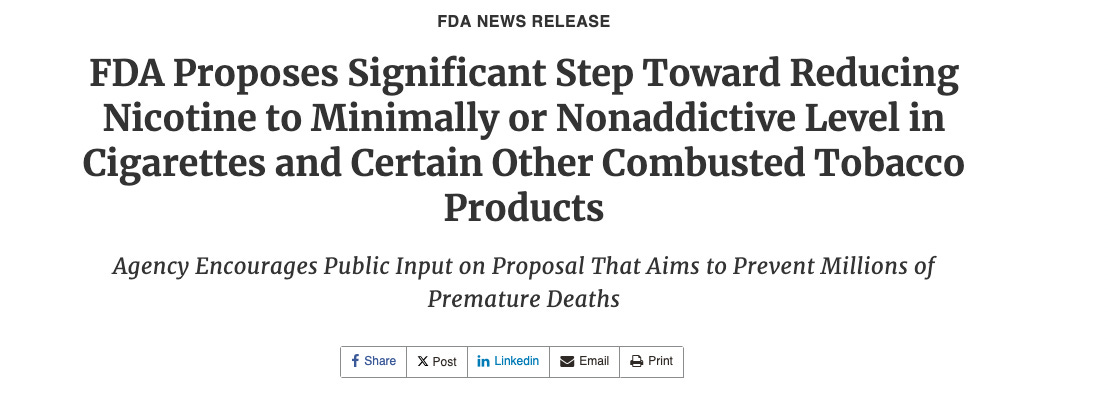
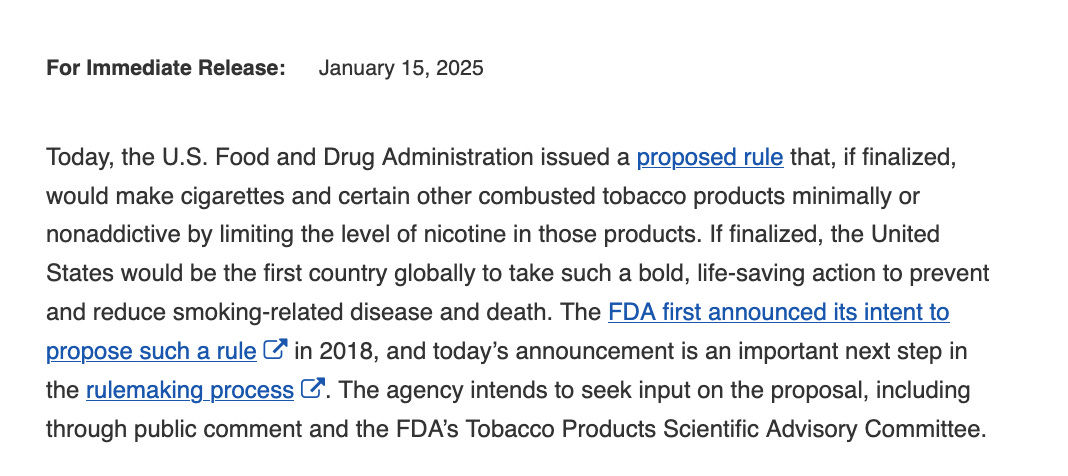


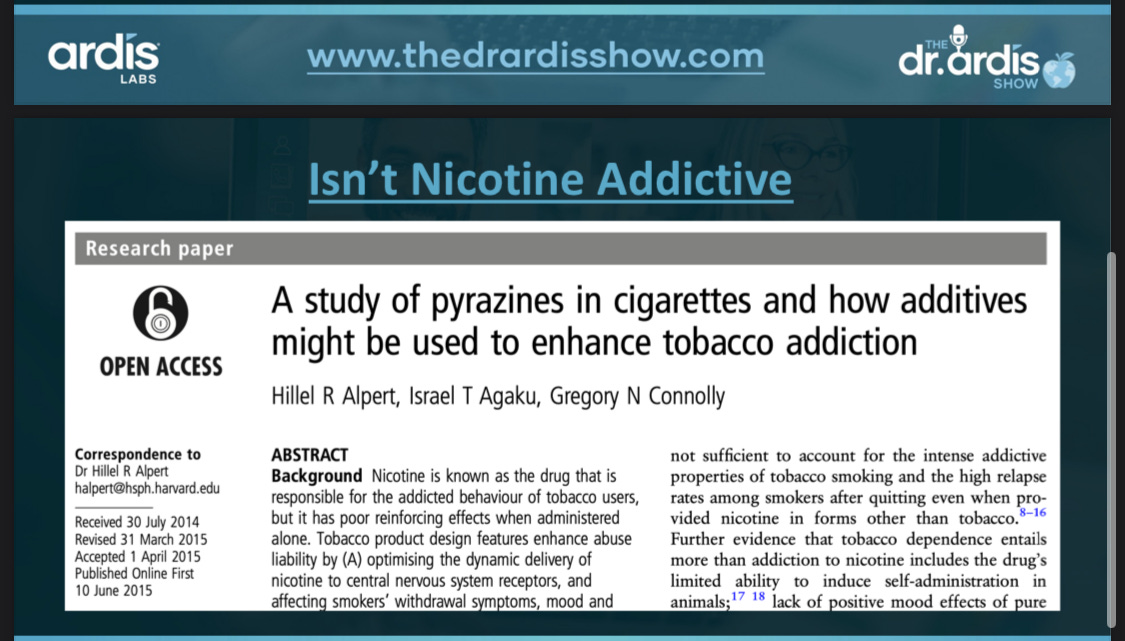

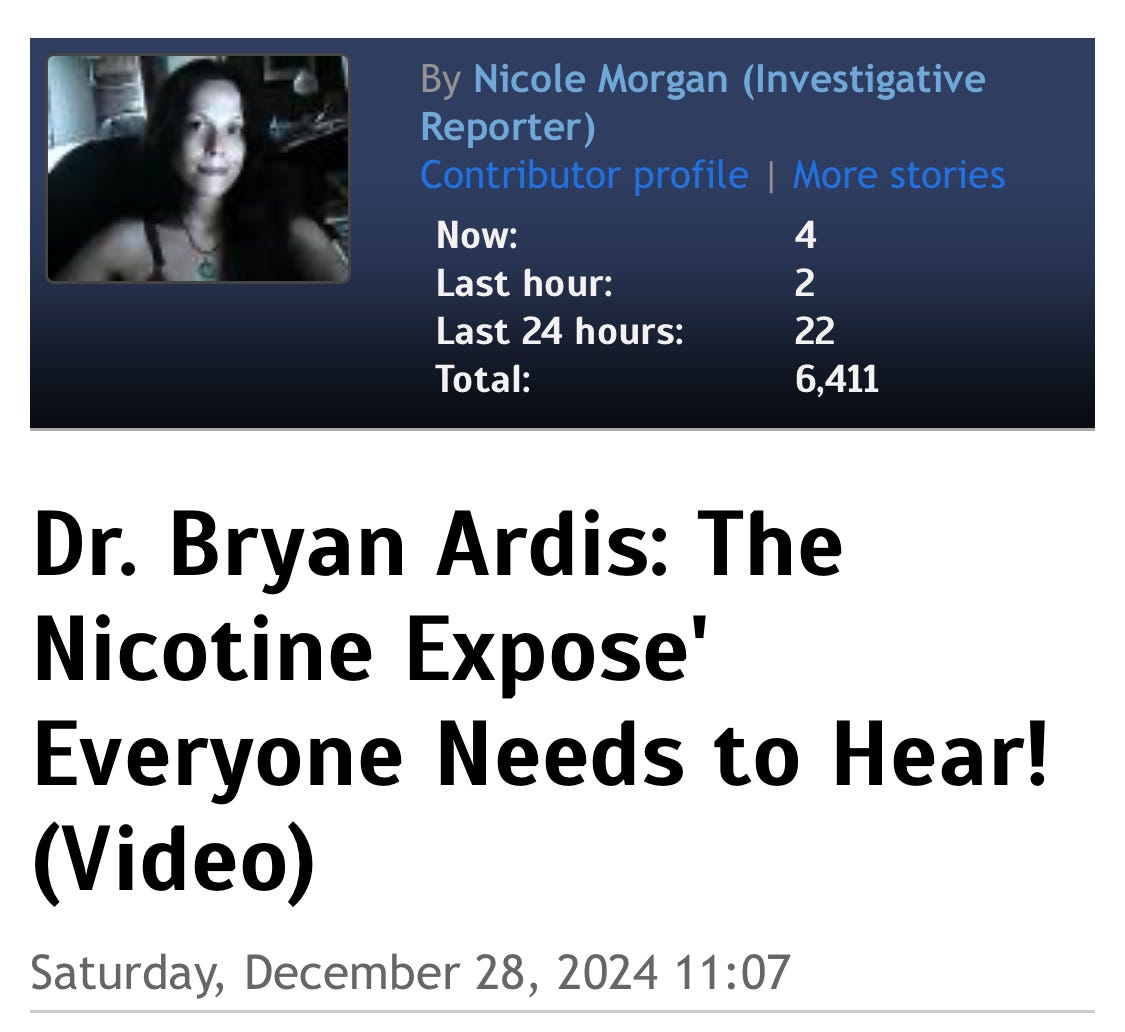
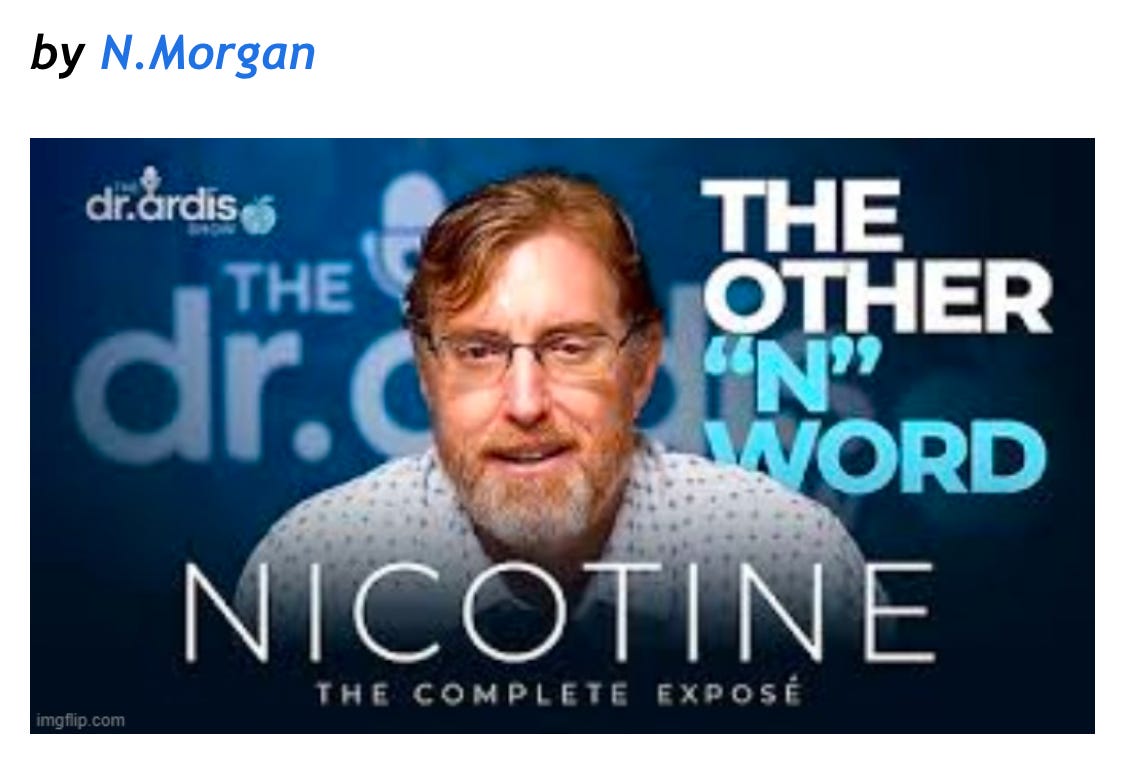
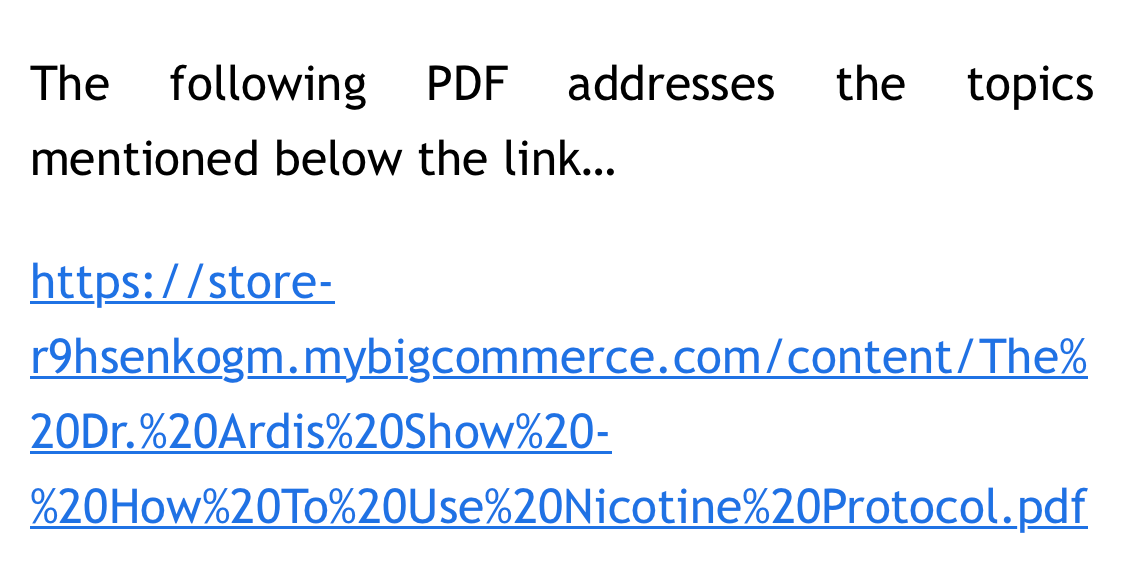
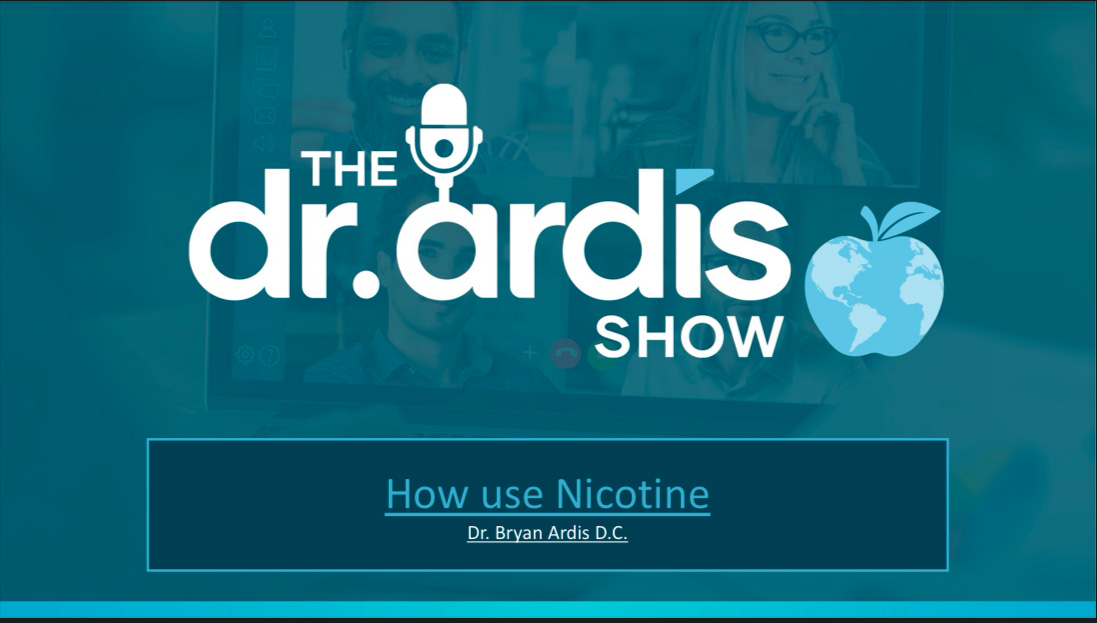
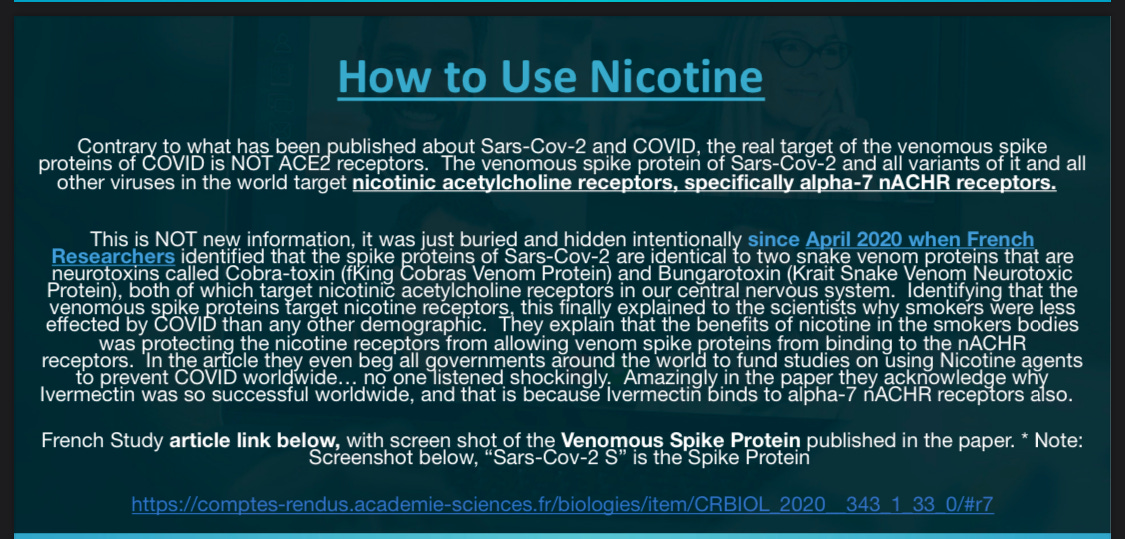
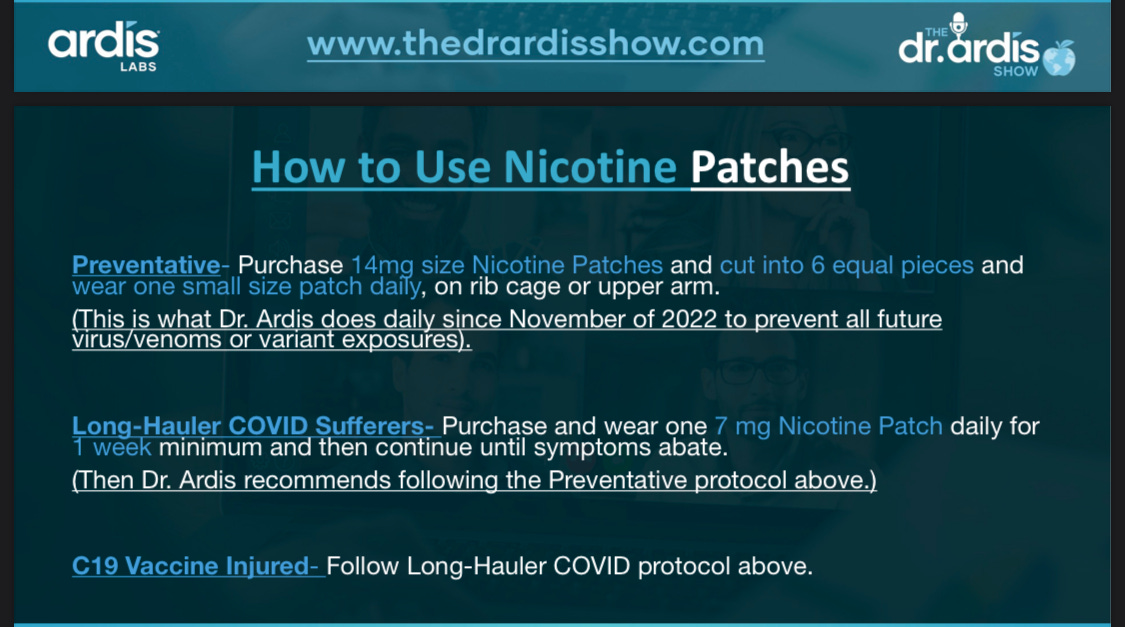
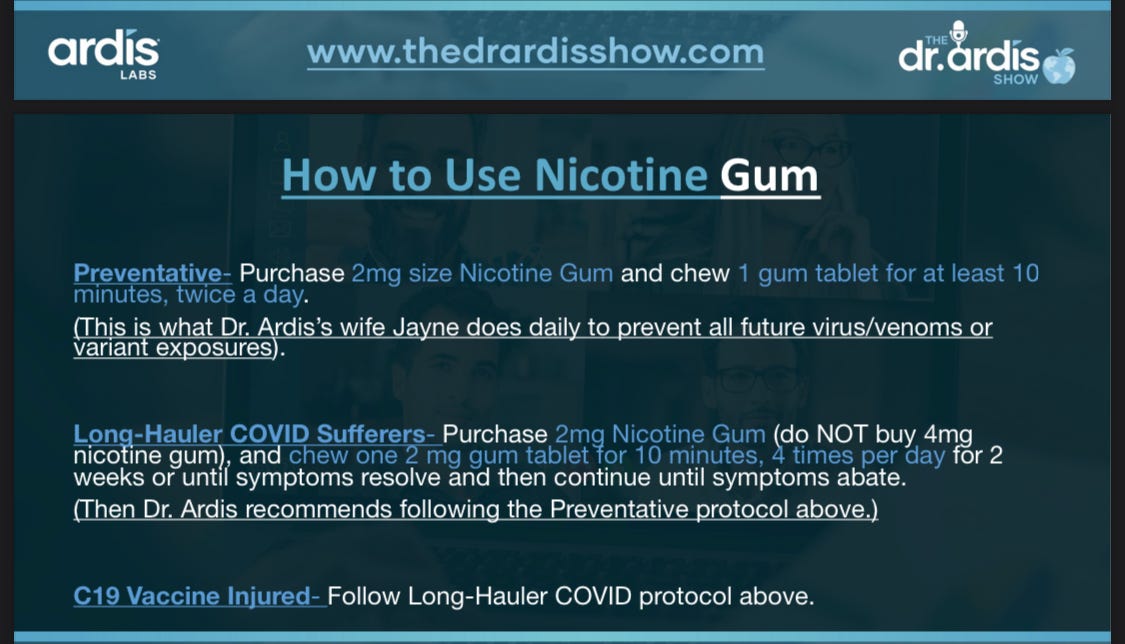
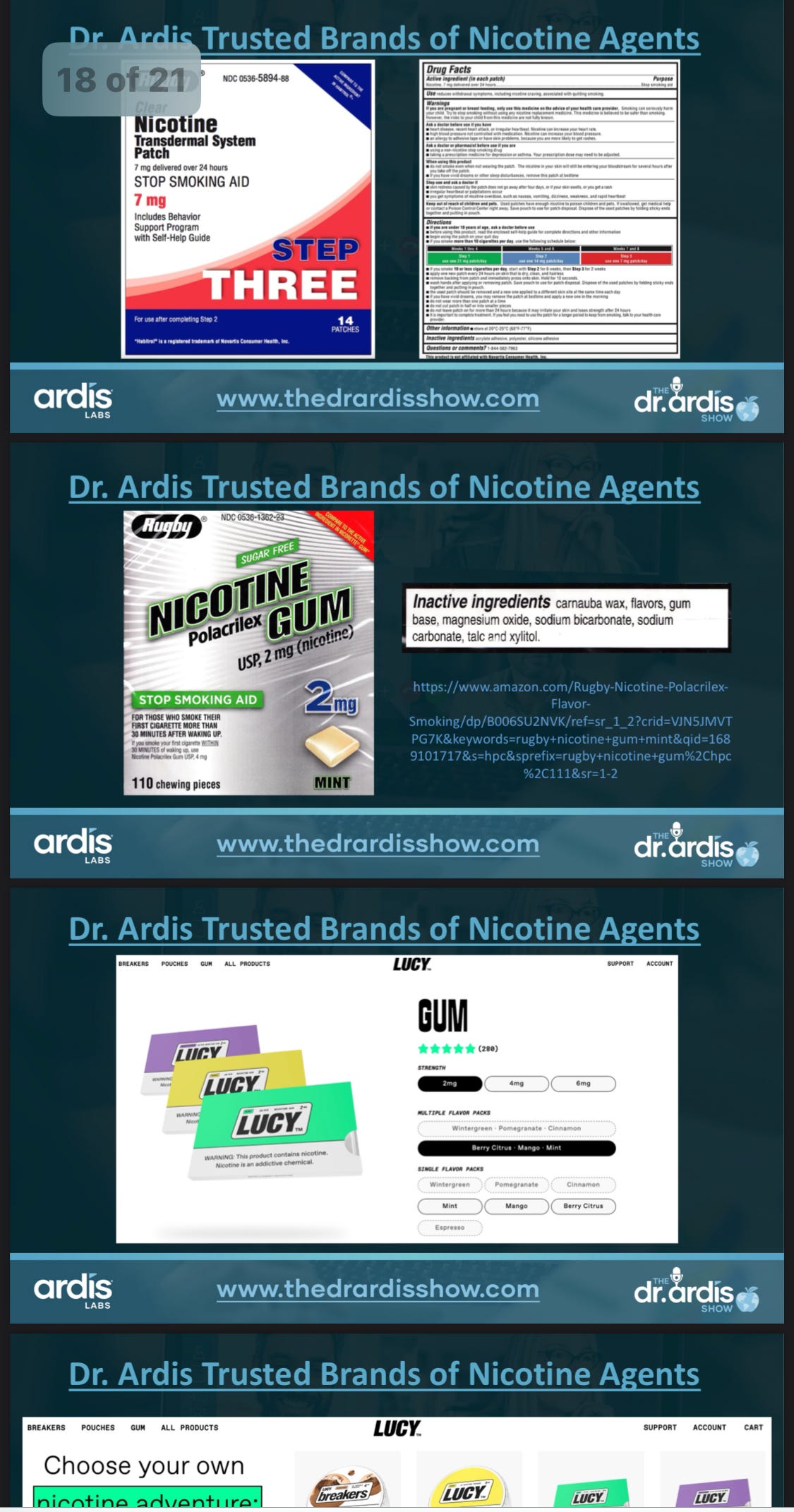
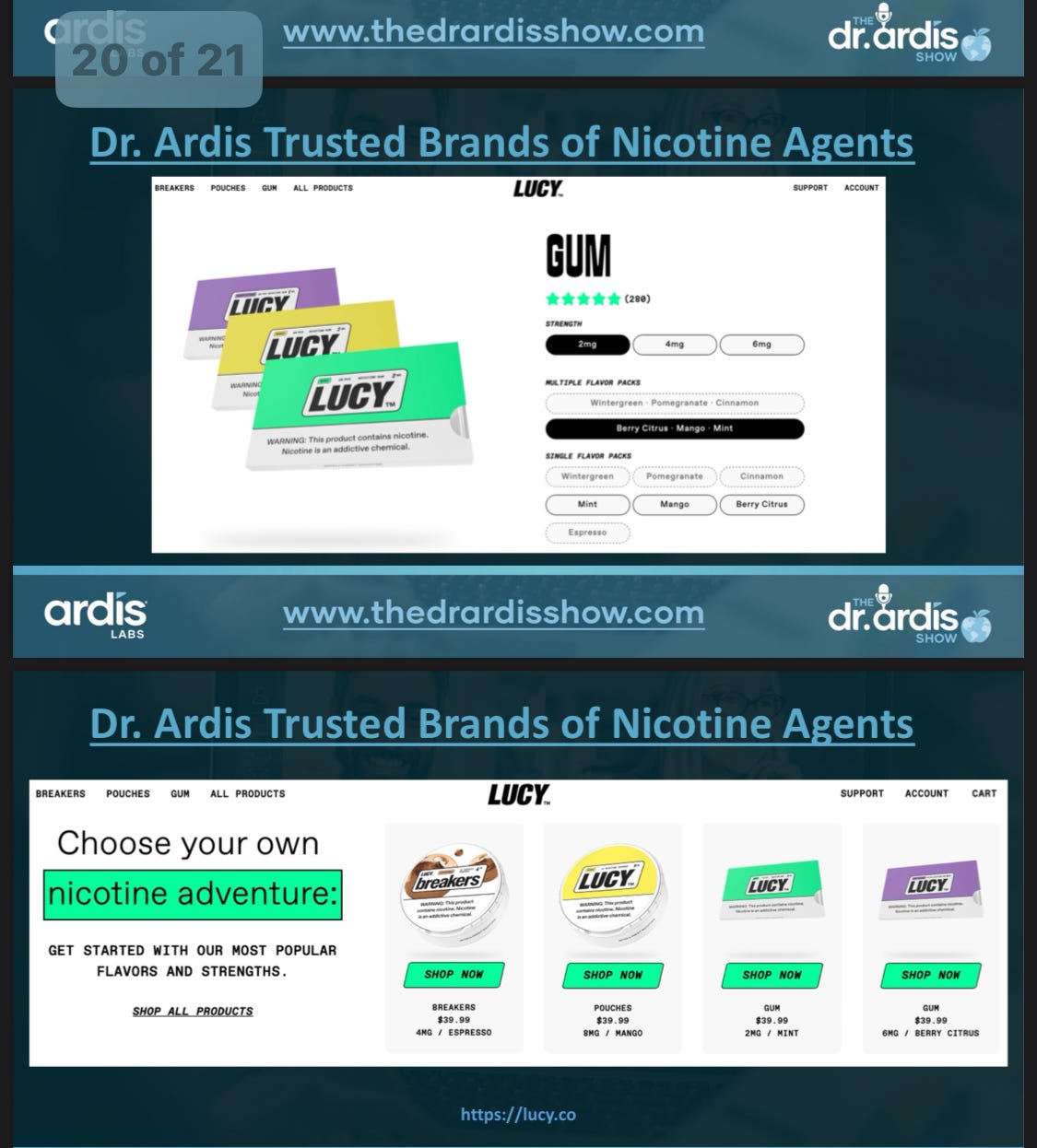

Synthetic nicotine is made from the vitamin niacin (nicotinic acid). It is chemically similar to nicotine but is not extracted from tobacco or tobacco-derived ingredients
In early 2020 I took flush niacin daily as a prophylactic against covid. I learned later smokers weren't coming down with covid as much. I'm not jabbed and haven't had covid.
I will take a look at your previous coverage of this topic, but have you reported on the use of saltpeter (component of gunpowder) that’s in nearly all cigarettes? How about the fact that the paper is bleached with dioxin… a known carcinogen?
Every bit of research concerning cigarettes is contaminated and needs to be thrown out.
They used to accuse the tobacco industry of adding nicotine to make their cigarettes more addictive. My Granddaddy grew and flue cured tobacco in a barn behind the house in North Carolina. I don’t believe he grew it for commercial use, although my Uncle worked for one of the major tobacco companies. We’re from North Carolina… tobacco country!
My Granddaddy sprayed his tobacco crop with nicotine because it’s a damn pesticide that’s naturally found in tobacco in smaller concentrations. I believe that commercial tobacco growers did the same thing because it would have been far cheaper than many of the other chemical pesticides. The addition of nicotine was NOT to further addict their customers… it was to protect their damn crops!